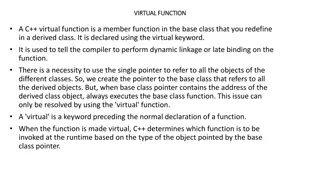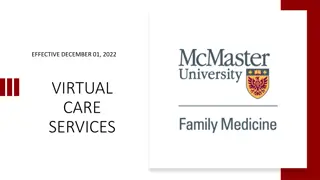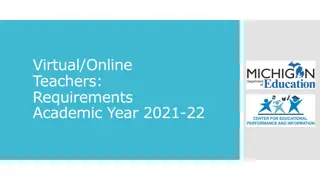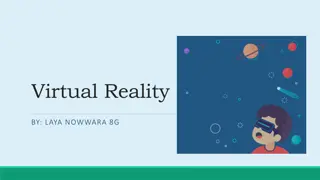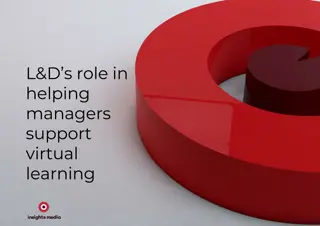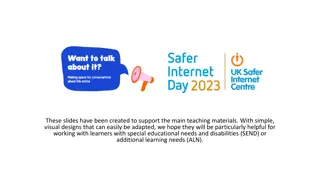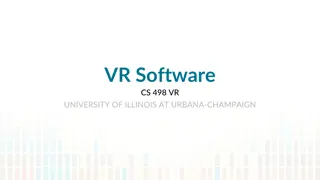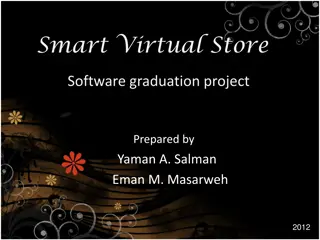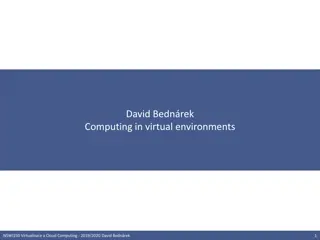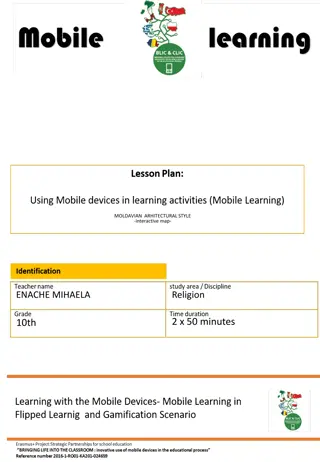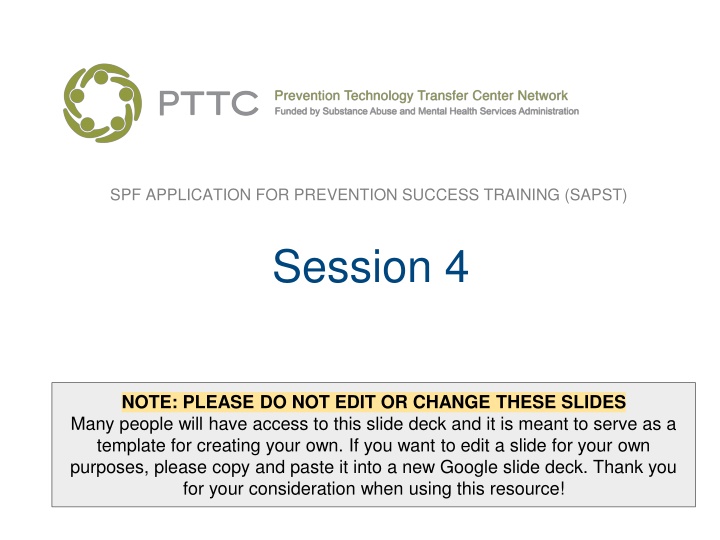
Prevention Success Training - Evaluating Challenges, Benefits, and Superpowers
Explore the importance of evaluation in prevention success training, addressing challenges and benefits, as well as engaging in a fun activity imagining superpowers. Participate in group activities and discussions to enhance learning and practical application.
Download Presentation

Please find below an Image/Link to download the presentation.
The content on the website is provided AS IS for your information and personal use only. It may not be sold, licensed, or shared on other websites without obtaining consent from the author. If you encounter any issues during the download, it is possible that the publisher has removed the file from their server.
You are allowed to download the files provided on this website for personal or commercial use, subject to the condition that they are used lawfully. All files are the property of their respective owners.
The content on the website is provided AS IS for your information and personal use only. It may not be sold, licensed, or shared on other websites without obtaining consent from the author.
E N D
Presentation Transcript
SPF APPLICATION FOR PREVENTION SUCCESS TRAINING (SAPST) Session 4 NOTE: PLEASE DO NOT EDIT OR CHANGE THESE SLIDES Many people will have access to this slide deck and it is meant to serve as a template for creating your own. If you want to edit a slide for your own purposes, please copy and paste it into a new Google slide deck. Thank you for your consideration when using this resource!
Welcoming Activity - Evaluation When I think of evaluation I feel The challenges of evaluation are The benefits of evaluation are
Welcoming Activity If you had a superpower what would it be...
PARKING LOT Type your NAME and QUESTION here!
OUR LEARNING ENVIRONMENT Attend all sessions in their entirety Begin and end on time, including breaks Set cell phones to OFF or VIBRATE Save texting and reading emails for breaks Take turns speaking one at a time Be open and respectful of others perspectives Respect confidentiality - what s said here stays here; what s learned here, leaves here Explain acronyms Use ELMO (Enough Let s Move On) S-T-R-E-T-C-H Others?
CASE STUDY ACTIVITY: Determining Fit Get into your case study groups. Use the risk/protective factor your group was previously assigned for Worksheet 3.11: Case Study Activity: Prioritizing Risk/Protective Factors. You will have 15 minutes for this activity. Select one of the following EBIs for your risk/protective factor. Refer to Information Sheet 4.1: Examples of Different Interventions for descriptions of the interventions. Lack of parental monitoring Evidence-based curriculum focused on parents Social access Increased enforcement of UAD laws Perception of harm Social marketing campaign focusing on youth perceptions of harm Positive opportunities to belong Youth advisory board with the local prevention coalition Please assign the following roles in your breakout group: Recorder Reporter Timekeeper In your group s Google Slide write your risk/protective factor and intervention you selected and answer the questions to determine the practical fit for that intervention using information about the case from Worksheet 3.12: Case Study: Assessment Information. Drag a circle from the stack to your selected answer for each question on your Google Slide.
GROUP 1 RISK/PROTECTIVE FACTOR (type here): SELECTED INTERVENTION (type here): Drag a circle from the stack to your selected answer for each question below. Practical Fit Considerations Resources: Do we have the resources NOW to implement the intervention? Yes No Need more info Contacts: Do we have the people involved that we need in order to be successful in implementing the intervention? Yes No Need more info Support: Will the community support an intervention? Do we have the organizational support we need to implement the intervention? Yes No Need more info Reflect culture: Will the cultural groups that are the focus of our intervention be receptive to what we plan to do? Are members of the focus population involved in the planning and implementation process? Yes No Need more info Sustainable: Do we have a plan that includes considerations about how positive outcomes would be maintained over time? Yes No Need more info Can be evaluated: Is there baseline data? Do we have a workable plan to collect and analyze our data before and after the intervention? Yes No Need more info
GROUP 2 RISK/PROTECTIVE FACTOR (type here): SELECTED INTERVENTION (type here): Drag a circle from the stack to your selected answer for each question below. Practical Fit Considerations Resources: Do we have the resources NOW to implement the intervention? Yes No Need more info Contacts: Do we have the people involved that we need in order to be successful in implementing the intervention? Yes No Need more info Support: Will the community support an intervention? Do we have the organizational support we need to implement the intervention? Yes No Need more info Reflect culture: Will the cultural groups that are the focus of our intervention be receptive to what we plan to do? Are members of the focus population involved in the planning and implementation process? Yes No Need more info Sustainable: Do we have a plan that includes considerations about how positive outcomes would be maintained over time? Yes No Need more info Can be evaluated: Is there baseline data? Do we have a workable plan to collect and analyze our data before and after the intervention? Yes No Need more info
GROUP 3 RISK/PROTECTIVE FACTOR (type here): SELECTED INTERVENTION (type here): Drag a circle from the stack to your selected answer for each question below. Practical Fit Considerations Resources: Do we have the resources NOW to implement the intervention? Yes No Need more info Contacts: Do we have the people involved that we need in order to be successful in implementing the intervention? Yes No Need more info Support: Will the community support an intervention? Do we have the organizational support we need to implement the intervention? Yes No Need more info Reflect culture: Will the cultural groups that are the focus of our intervention be receptive to what we plan to do? Are members of the focus population involved in the planning and implementation process? Yes No Need more info Sustainable: Do we have a plan that includes considerations about how positive outcomes would be maintained over time? Yes No Need more info Can be evaluated: Is there baseline data? Do we have a workable plan to collect and analyze our data before and after the intervention? Yes No Need more info
GROUP 4 RISK/PROTECTIVE FACTOR (type here): SELECTED INTERVENTION (type here): Drag a circle from the stack to your selected answer for each question below. Practical Fit Considerations Resources: Do we have the resources NOW to implement the intervention? Yes No Need more info Contacts: Do we have the people involved that we need in order to be successful in implementing the intervention? Yes No Need more info Support: Will the community support an intervention? Do we have the organizational support we need to implement the intervention? Yes No Need more info Reflect culture: Will the cultural groups that are the focus of our intervention be receptive to what we plan to do? Are members of the focus population involved in the planning and implementation process? Yes No Need more info Sustainable: Do we have a plan that includes considerations about how positive outcomes would be maintained over time? Yes No Need more info Can be evaluated: Is there baseline data? Do we have a workable plan to collect and analyze our data before and after the intervention? Yes No Need more info
CASE STUDY ACTIVITY Implementation, Part 1 Get in your case study groups. You will have 15 minutes for this activity. On your group s Google Slide write the risk/protective factor and intervention you were assigned from Worksheet 4.4: Case Study Activity: Determining Fit. Please assign the following roles in your breakout group: Recorder Reporter Timekeeper Refer to Worksheet 4.7: Case Study Activity: Implementation, Part 1. On your Google Slide, brainstorm and list at least 5 action steps, in sequential order, to take in the first 3-6 months of implementing this intervention. Assign someone new to report out.
CASE STUDY ACTIVITY Implementation, Part 1 GROUP 1 RISK/PROTECTIVE FACTOR: INTERVENTION: Action Steps
CASE STUDY ACTIVITY Implementation, Part 1 GROUP 2 RISK/PROTECTIVE FACTOR: INTERVENTION: Action Steps
CASE STUDY ACTIVITY Implementation, Part 1 GROUP 3 RISK/PROTECTIVE FACTOR: INTERVENTION: Action Steps
CASE STUDY ACTIVITY Implementation, Part 1 GROUP 4 RISK/PROTECTIVE FACTOR: INTERVENTION: Action Steps
CASE STUDY ACTIVITY Implementation, Part 2 In your case study groups, from your homework list some potential challenges only to implementing the intervention you selected (refer to Part 1). Write them down on the Google Slides that follow. See Worksheet 4.7: Case Study Activity: Implementation, Part 2. You will have 15 minutes for this activity. Please assign the following roles in your breakout group: You will be asked to exchange your list of challenges with another group (including the information about the risk/protective factor, intervention and action steps from Part 1. Brainstorm some potential solutions to the challenges identified by the other group for their risk or protective factor and intervention. Assign someone new to report out one challenge and solution. Recorder Reporter Timekeeper
Group 1 CASE STUDY ACTIVITY Implementation, Part 2 RISK/PROTECTIVE FACTOR: INTERVENTION: Potential Challenges Possible Solutions Group 1 Group 2
Group 2 CASE STUDY ACTIVITY Implementation, Part 2 RISK/PROTECTIVE FACTOR: INTERVENTION: Potential Challenges Possible Solutions Group 2 Group 1
Group 3 CASE STUDY ACTIVITY Implementation, Part 2 RISK/PROTECTIVE FACTOR: INTERVENTION: Potential Challenges Possible Solutions Group 3 Group 4
Group 4 CASE STUDY ACTIVITY Implementation, Part 2 RISK/PROTECTIVE FACTOR: INTERVENTION: Potential Challenges Possible Solutions Group 4 Group 3
ACTIVITY Process or Outcome? Instructions As a large group, review each of the evaluation questions on the Google Slide and select whether it is a process or outcome evaluation question. Check the appropriate box. You will have 10 minutes for this activity. Please assign the following roles in your breakout group: Recorder Reporter Timekeeper Information Sheet 4.8: Overview of Evaluation Worksheet 4.9: Activity: Evaluation Questions
Evaluation questions Process Outcome 1. How many individuals/groups did the intervention serve? 2. To what extent did the intervention lead to improved coping skills among participants? 3. To what extent was the intervention implemented completely, as intended? 4. How many participant youth used alcohol one year after the end of the intervention? 5. To what extent did the intervention lead to a change in participants attitudes toward the harmful effects of using tobacco? 6. How many students who were referred to the intervention actually participated? 7. What cultural adaptations were made to the intervention? 8. Were the people exposed to the intervention representative of the population the intervention was intended for? 9. How are preliminary evaluation findings being used to improve the intervention? 10. After the intervention, did people exposed to it have more positive normative beliefs compared to those not exposed?
CASE STUDY ACTIVITY Determining Outcomes Get in case groups. Use the risk/protective factor and intervention you were assigned earlier. You will have 10 minutes for this activity. Group 1: Lack of parental monitoring Group 2: Social access Group 3: Perception of harm Group 4: Positive opportunities to belong Please assign the following roles in your breakout group: Select a recorder/reporter. Recorder Reporter Timekeeper Determine a short-term outcome for that risk/protective factor. Write your risk factor, intervention, and short-term outcome in the Google Slide for your group. Be prepared to explain your complete logic model.
GROUP 1 CASE STUDY ACTIVITY: Determining Outcomes Risk and Protective Factors Behaviors and Related Problems Long-term Outcomes Short-term Outcomes Reduce 30-Day Use by 9th graders to 30% (2024/YRBSS) Underage Drinking
GROUP 2 CASE STUDY ACTIVITY: Determining Outcomes Risk and Protective Factors Behaviors and Related Problems Long-term Outcomes Short-term Outcomes Reduce Underage Past 30-Day Use to 30% (2024) Underage Drinking
GROUP 3 CASE STUDY ACTIVITY: Determining Outcomes Risk and Protective Factors Behaviors and Related Problems Long-term Outcomes Short-term Outcomes Reduce Underage Past 30-Day Use to 30% (2024) Underage Drinking
GROUP 4 CASE STUDY ACTIVITY: Determining Outcomes Risk and Protective Factors Behaviors and Related Problems Long-term Outcomes Short-term Outcomes Reduce Underage Past 30-Day Use to 30% (2024) Underage Drinking
ACTIVITY Creating a Sustainability Plan Get in your case study groups. Each group will be assigned one of the sustainability planning steps. You will have 10 minutes for this activity. Select a recorder/reporter. Please assign the following roles in your breakout group: Refer to Information Sheet 4.13: Core Components of Sustainability. Recorder Reporter Timekeeper Brainstorm 3-5 concrete actions needed to implement your group s assigned step. List these on your group s Google slide: Group 1: Step 2 Group 2: Step 3 Group 3: Step 4 Group 4: Step 4 Be prepared to report out to the larger group.
ACTIVITY Creating a Sustainability Plan GROUP 1 Assigned Component: Step 2 - Identify priorities to sustain prevention outcomes. Action Steps
ACTIVITY Creating a Sustainability Plan GROUP 2 Assigned Component: Step 3 - Complete a resource analysis and identify feasible interventions. Action Steps
ACTIVITY Creating a Sustainability Plan GROUP 3 Assigned Component: Step 4 - Develop communication and marketing products and interventions. Action Steps
ACTIVITY Creating a Sustainability Plan GROUP 4 Assigned Component: Step 4 - Develop communication and marketing products and interventions. Action Steps
Activity Assess Your Learning Experience Please include your name with your answers. Something new I learned this week is
Please include your name with your answers. Activity Assess Your Learning Experience Something I already know but gained a better understanding of this week is
Activity Assess Your Learning Experience Please include your name with your answers. Something I m still wondering about is
Activity Assess Your Learning Experience Please include your name with your answers. Something from this training that I will use in the next month is



